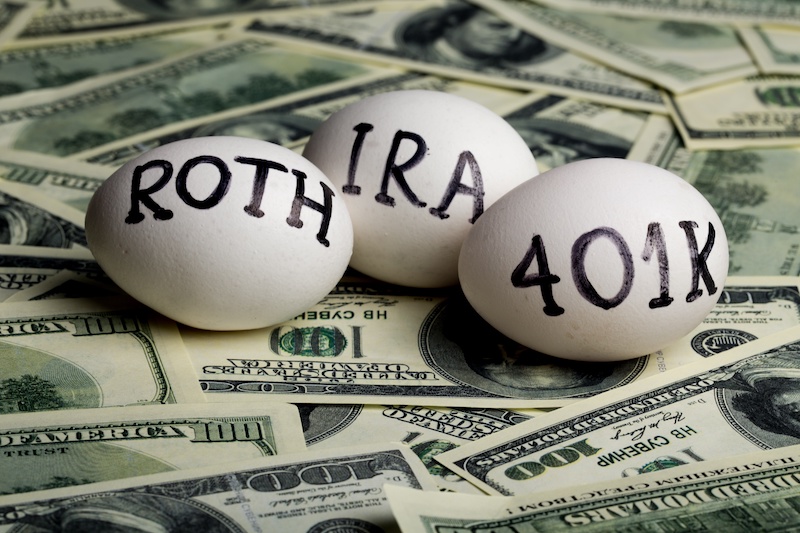Saving for retirement is one of the core tenets of any financial plan, but retirement itself is still a relatively new concept. For most of human history, people simply didn’t live long enough to worry about retiring from work. Even as recently as a few generations ago, retirement was a completely alien concept to the average individual. Maybe the ultra-wealthy could afford to stop working and live off investments, but the average person didn’t think this would be possible.
Today, retirement is a goal nearly everyone with a job has in mind. Savings incentives combined with federal benefits like Social Security and Medicare made it possible for those of modest means to retire and live comfortably in their golden years. Retirement is always a good thing.
An older generation gets to ride off into the sunset while the younger generation steps up and enters the workforce. The government understands this, which is why retirement savers get plenty of tax breaks depending on where they park their money. Today, we’ll look at the various tax-advantaged retirement accounts and discuss the pros and cons of each.
Individual Retirement Accounts (IRAs)
One of the most common types of tax-deferred savings vehicles is the IRA. A traditional IRA can be opened by anyone with earned income and it’s one of the more convenient ways to accumulate wealth for retirement.
IRAs are custodial investment accounts that can be opened at pretty much any reputable brokerage firm. Funds put into an IRA can be used for a variety of investments, from individual stocks to index funds. You can even hold derivatives like options and futures if you’re so inclined.
IRAs are advantageous because contributions made to them during the year can be written off on your income taxes, up to a certain limit. For 2021, that limit is $6,000, although you can contribute an additional $1000 and still get the tax break if you’re 50 or older. If you contribute the full $6,000 to your IRA, you’ll be able to deduct $6,000 in income from your tax obligations that year.
So what’s the catch? There are a few: taxes are only deferred in these accounts, meaning you have to settle up with the IRS when you begin making withdrawals from the account. Additionally, any withdrawal made before age 59.5 will be taxed AND hit with a 10% early withdrawal penalty. There are some exceptions to that rule-
Finally, the tax break offered by IRA accounts goes away if your income is over a certain level and you (or your spouse) have access to additional retirement vehicles. For example, if you or your spouse have a 401(k) through an employer, you can only deduct IRA contributions if your income falls below a certain level. For 2022, the MAGI is less than $68k for single filers, you get a full deduction, between $68k and 78k, a partial deduction. For married couples filing jointly, you get a full deduction if MAGI is less than $109k, between $109k and $129k, a partial deduction. However, if both you and your spouse lack a workplace retirement plan, you can deduct the full contribution regardless of your MAGI. If your spouse has a 401(k) and you do not, you can still make a deduction on your own IRA no matter your MAGI.
401(k) Plans
The other common type of retirement vehicle is the 401(k) plan. Unlike an IRA, the 401(k) is an employer-sponsored plan, which means you can only enroll in one through your place of business. If your employer doesn’t offer a 401(k), you can’t open one on your own.
Tax breaks on a 401(k) plan are just like the traditional IRA: contributions made to the account can be deducted from your taxes up to a certain limit. But this individual limit is much higher on the 401(k) – for 2021, up to $19,500 in contributions can be deducted. And that’s just the personal level.
Many employers offer some type of 401(k) match, where they kick in additional funds to the account. You may never find a free lunch in finance, but this 401(k) match is usually the closest you’ll find. Employer contributions do NOT count against the $19,500 limit either.
Of course, 401(k) plans have some drawbacks. In some plans individual stocks and ETFs cannot be owned inside a 401(k), only mutual funds and annuities are permitted, the plan could have high fees plus you can’t always withdraw your money when you want, but there are some exceptions. Larger companies like Wal-Mart and Chevron offer the opportunity to own their company stock and your investment choices here are usually limited to the whims of your employer – you’ll need to find the best options from whatever investment choices are included.
The way you can withdraw money from a 401k is through a loan, if the company permits it, or by a hardship withdrawal (but you must prove it). It is also possible to do an in-service rollover to an IRA, but, again, it depends if the company allows it. When you change jobs or retire you can rollover to an IRA and take it out but you will owe taxes and possibly a 10% penalty.
Roth IRAs and 401(k) Plans
An alternative to the IRA and 401(k) was coined by Delaware senator Philip Roth and today shares his name. Roth IRA and 401(k) plans operate a little differently than their older cousins – mainly in the way taxes are handled.
The Roth variations are funded with post-tax dollars. Unlike a traditional IRA or 401(k), no tax deductions can be made on contributions to these accounts. However, once the funds are in the accounts, all investments will grow completely tax-free.
Due to these serious tax advantages, high net worth individuals ( For 2021 MAGI over $140k for single filers and MAGI over 208k for married filing jointly) cannot contribute to Roth accounts. (A backdoor Roth IRA conversion is still possible though, but you’ll need the assistance of an advisor to perform it).
Tax-free investment growth isn’t the only perk of a Roth IRA or 401(k). Since contributions to these accounts have already been taxed, the principal can be withdrawn at any time without penalty. Any profits from investment growth must remain in the account until your 59.5-year-old withdrawal age is reached, but the original contributions won’t be penalized or taxed if removed. There are no RMDs attached to Roth accounts either (with the exception of inherited Roth IRA accounts). This makes them ideal tools for passing down assets to heirs.
Less Common Types of Retirement Plans
- 403(b) Plans – The 403(b) is a plan similar to a 401(k), but for public and/or non-profit employees like teachers, police, etc. These provide the same tax breaks as a 401(k), but often carry expensive insurance products in their catalog that retirement savers would be better off eschewing. If you have a 403(b), make sure you’re only investing in low-cost mutual funds and not expensive (and inefficient) annuities.
- Simplified Employee Pension (SEP-IRA) – If you’re self-employed, you can use the SEP IRA to fund your retirement savings. The SEP-IRA allows contributions of 25% of your net earnings from self-employment or $58,000 for 2021 and $61,000 for 2022 (Whichever is lower). Contributions are tax-deductible and taxes won’t be owed until withdrawal at age 59.5. Functions similarly to a traditional IRA, but with a higher contribution limit.
- Thrift Savings Plans (TSP) – The TSP is part of the Federal Employee Retirement System (FERS) package. TSP accounts can be either traditional or Roth variations, but qualifying individuals will only have five government-sponsored investment choices to pick from.
TRAC Advisor Group Inc. is a full-service, fee-based financial advisory firm in Norman, OK. We offer independent investment advice and help people withstand any type of market volatility with confidence.
As an independent investment advisor, we can offer alternative investments like numismatics and precious metals to diversify and hedge against uncertain times. With a straightforward and direct planning style, you can trust that we’ll keep you on track towards your financial goals.
Explore our new website and Contact Us today to schedule a consultation today.


